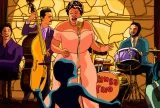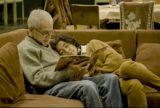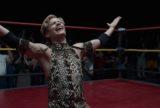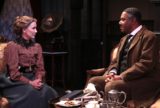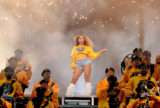News Headlines
The Top 3 Latino Films of 2023
01.5.2024My Top Films of 2022 on PIX 11 News
12.20.2022West Side Story (Movie Review)
12.2.202107.6.2010 | By Terry Kim |

Rated: Not Available
Release Date: 2009-12-11
Starring: Tom Ford, Christopher Isherwood, David Scearce
Director(s):
Distributor:
Film Genre:
Country:Australia
Official Website: http://www.asingleman-movie.com/
Since Tom Ford was such a successful designer—he is credited for reviving Gucci and Yves Saint Laurent—it was a surprise to many when he left Gucci Group in 2004. It was all the more surprising, therefore, when he started a film production company. A Single Man is his first feature, and one that shows potential for more good films to come.
A Single Man is adapted from Christopher Isherwood’s novel by the same name, and is about a gay English professor, George (Colin Firth), who is grieving for his long-time partner, Jim (Matthew Goode). To put an end to his woe, George decides to terminate his own life; it is this “final” day that we spend with him, meeting old friends and new, making amends before he leaves for the netherworld. George’s life examination process brings to mind other great films of the past dealing with death and existential loneliness, such as Akira Kurosawa’s Ikiru (1952) and Ingmar Bergman’s Wild Strawberries (1957). In between George’s encounters throughout the day—most notably with his student, Kenny Potter (played by Nicholas Hoult), a beautiful Spanish youth, and his next-door neighbor, Mrs. Strunk (Ginnifer Goodwin)—are flashbacks to some of George and Jim’s happiest moments together, all painful reminders that Jim is now gone, and George is still alive. When George finally comes to terms with his past and begins to envision a more optimistic future, fate takes an ironic turn, and he succumbs after his final heart attack.
The visuals are stunningly beautiful, and the music is just as powerful (sometimes dominating the images, even). The former aspect owes itself to Ford’s former trade, along with the collaboration of the director of photography, Eduard Grau, and the editor, Joan Sobel; the latter is thanks to the compositions of Abel Korzeniowski and Shigeru Umebayashi (most noted for the score in Wong Kar-wai’s In the Mood for Love). Because the camera usually works with no more than two actors at a time, and because dialogue is equally concentrated, the viewer cannot be less than captivated. Colin Firth’s and Julianne Moore’s remarkable performances heighten the film experience; Colin Firth’s Best Actor Award at this year’s Venice Film Festival is thus well-deserved. Alas, there is even Oscar buzz for both actors.
It’s hard to miss the 1962 undercurrents, as references to the Cuban Missile Crisis blast from television sets and radio stations throughout the film. Our protagonist lives in an era in which the nuclear threat looms menacingly overhead. We are then confined further, into some of George’s interior monologues (the novel is composed almost entirely of these monologues), consisted mostly of self-pitying, morbid comments about the humdrum reality. Tom Ford also gave the character more dimension by using autobiographical elements. For example, George’s preparation for his suicide was modeled after a suicide in Ford’s family.
The film is a spiritual tale, one that, as Tom Ford mentioned in his director’s statement, makes you realize that “the small things in life are really the big things in life.”


